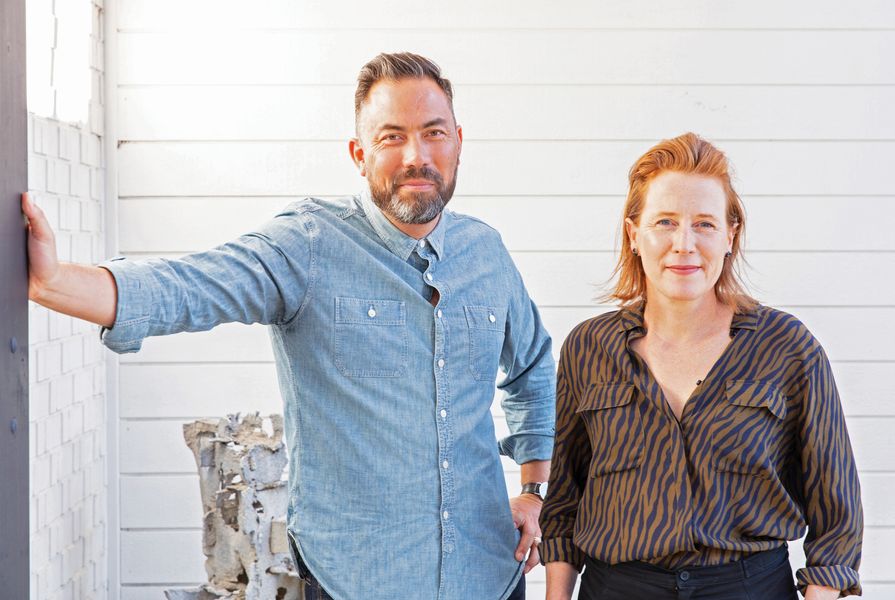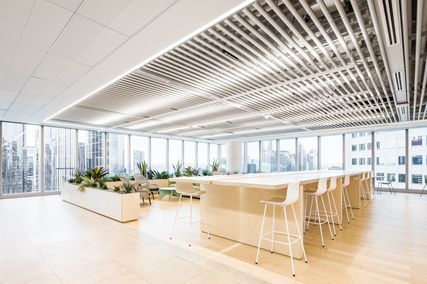The challenges that confront humanity are ones that architects, too, must face. The alarming impacts of climate change, the depth of income inequality, the invidiousness of racism and the persistence of sexism. The world is burning, both literally and metaphorically.
How, then, do we talk about architecture and the answers it may offer to our collective troubles? The right words require architects to move beyond the contented conversations of commodity, firmness and delight. Rather, architecture must reimagine itself. It must deliberately and self-consciously embrace the complexities of making the world a better place even – and especially when – it appears to be beyond our control. Design excellence resides not simply in the deferred creation of beautiful buildings. It is also found in the daily routines of architectural process: how an architectural problem is defined, who is empowered to speak and whose stories will be told. The manner in which architects help to shape responses to the fundamental questions of our humanity will determine their ability to remain relevant, to make a lasting contribution and to thrive into the future.
House designs for Indigenous communities need to take into account specific cultural considerations that differ between communities.
Image: The Fulcrum Agency
One practice has begun to pursue such challenges. Perth-based The Fulcrum Agency is run by architects Emma Williamson and Kieran Wong, partners in business and in life. Williamson and Wong ran the successful and highly regarded architectural practice CODA Studio until 2017, when they merged with Cox Architecture. This was the first of several strategic “step changes” to expand the business and develop more opportunities for staff. Though the relationship with a larger practice was brief – Williamson and Wong departed Cox at the end of 2018 – the merger showed that by combining mutually beneficial and complementary skills, sustainable practice formations were possible.
But something was still missing, so Williamson and Wong “pivoted,” to use their own word, towards an alternative practice model that remains architectural while renouncing conventional design and delivery. Its name, The Fulcrum Agency, offers clues to the practice’s ambitious mission. By combining a visual metaphor for balance and leverage with the notion of control and purpose, a dynamic quality is suggested and the practice’s strategic intent is confidently asserted: to “leverage community and social outcomes through evidence- based design thinking.”
It is a brave move to forge an alternative practice pathway through an industry that more often beholds the building as the defining characteristic of architectural endeavour. While the CODA years certainly attest to the confident design capabilities of its partners, The Fulcrum Agency’s renewed focus suggests an equally creative way for practice to engage with the built environment without being seduced by the desire to “design” in a conventional sense. The provocation here is this: is there a place for a “social architecture” in a world that consumes images and privileges objects over relationships?
Anindilyakwa Housing Aboriginal Corporation’s Colleen Mamarika in conversation with The Fulcrum Agency’s Heather MacRae on the Groote Archipelago.
Image: Bo Wong
Like most architectural practices, The Fulcrum Agency champions the values of and aspirations for design quality, better public spaces and sensible planning and procurement processes. Williamson is quick to point out, “We love architecture and beautiful buildings.” But The Fulcrum Agency’s interests extend to questions of social equity, community engagement, mental wellbeing and public policy more broadly. “Our top five projects,” Wong notes, “are not buildings but strategy documents.” The practice has recently written design guidelines for the Northern Territory government’s remote housing program, Room to Breathe; it is advising the Western Australian government on the New Museum in Perth; Williamson and Wong have written pieces on gender equity in the profession; and they will be on the curatorial team for the 2020 Australian Institute of Architects’ national conference, entitled Leverage. This sort of work does not describe a building, but it is about critical engagement in architecture. In this way, The Fulcrum Agency may be pioneering a role for architects as reimagined public intellectuals.
As part of this repositioning, The Fulcrum Agency has launched a biannual publication that interrogates a single word with each published issue. The first issue examined “Pivot” and included an interview with Scott Ludlam, the former Australian Greens senator. The second looked at “Agency” and included interviews with a musician and a fashion designer about how they work to strengthen their industries, with salient lessons for architects.
Wong acknowledges that a sense of restlessness informs the practice’s work. “Buildings take a long time to make,” he observes, so impact is often only understood after a building is constructed and occupied. The Fulcrum Agency is interested, as well, in the moments of influence that can be found along the way. By developing strategic collaborations – “connecting the dots,” as Williamson calls it – with other experts in architecture, planning, environmental health and community development, the practice believes it can address community challenges at a quickened pace. In the Northern Territory, for example, the practice is looking at ways to help embed the environmental health principles developed by Healthabitat into public housing delivery, while also advocating for a pilot project to measure the program’s social and cultural impact. And in Groote Eylandt in East Arnhem Land, the agency has been working over several years with the Anindilyakwa Housing Aboriginal Corporation to create culturally appropriate housing models (see Figures 1 and 2).
The Fulcrum Agency grew out of Williamson and Wong’s desire to remain in Perth, a unique but isolated city with a fickle economy. This meant rethinking how to practice architecture when the conventional approaches of aggressive marketing and fee bidding were self-evidently broken. “Now is the worst time to start a new business in Western Australia,” Wong remarks. But the opportunity to realign their practice with more diverse approaches to community engagement and influence was compelling.
Wong likens their formation to a “retained services” model found in the media and advertising industries, where they commit to being “on call” over the long term, creating more meaningful client relationships as opposed to one-off, project-based arrangements that are more typical to the architecture industry. While this “agency of record” approach has met its challenges in other industries, it may have new currency within architecture.
The Fulcrum Agency walked the housing sites with representatives from each Groote Archipelago clan and ensured that adequate time for consultation was built into the process.
Image: The Fulcrum Agency
Research in practice has also become an important means of project interrogation, as well as a point of difference in service offerings. The Fulcrum Agency has responded to this and begun to build a research business that complements the consultancy. It is currently involved in research partnerships with the University of Queensland, Monash University and the University of Sydney to measure impact in community engagement, housing delivery, and social and cultural agency.
By Williamson and Wong’s own admission, The Fulcrum Agency is not an architectural business. Wong notes that “clients need architectural skills, but often think they don’t need architects in the room.” The question therefore becomes, “How can you be an architect and still have influence?” Williamson concurs with Wong’s assessment of the status of architecture and suggests that the most effective way to restore its reputation is to cultivate great clie nts who wi ll support the value of what an architect can offer, and who will advocate for design quality and for better social outcomes.
Architectural practice is not above the messiness of the world; we all feel the ebb and flow of market tides, and we can respond to these in turn. But architecture is more fundamentally implicated in the everyday: in the flow of capital, in the machinations of politics, in the urgency of climate change and in the imperatives of cultural reconciliation. How practitioners reimagine themselves in responding to these more far-reaching questions will spell our future. “Architecture,” Williamson says, “is a rarefied profession. Let us open up our profession to being part of a larger world, part of a bigger social and cultural conversation.”
Disclaimer: At the time of publications, Andrew Broffman is an architect who has worked in small, medium and large practices, in urban and regional locations. He has since joined The Fulcrum Agency.
Source

People
Published online: 9 Mar 2021
Words:
Andrew Broffman
Images:
Bo Wong,
The Fulcrum Agency
Issue
Architecture Australia, March 2020



























